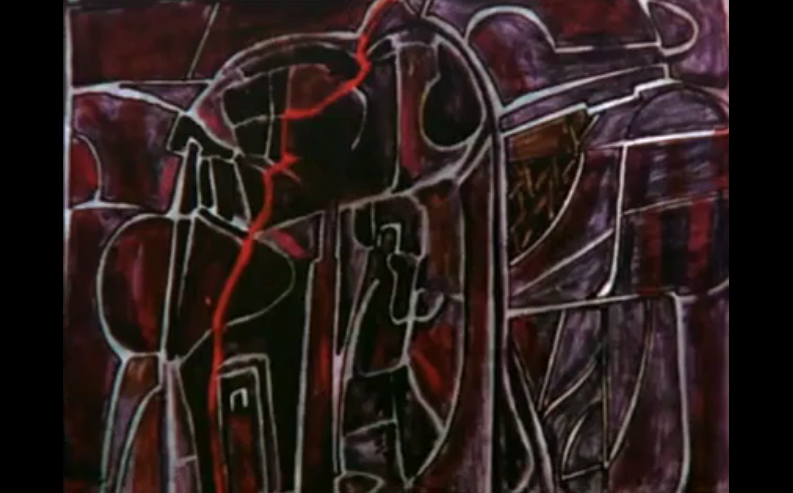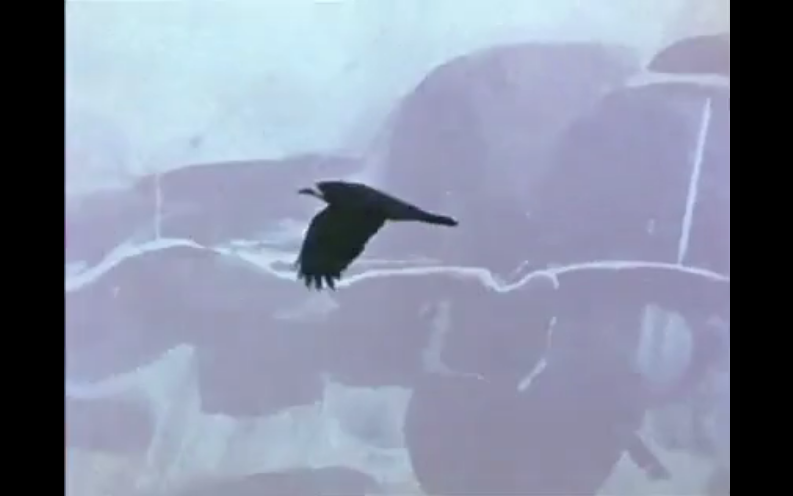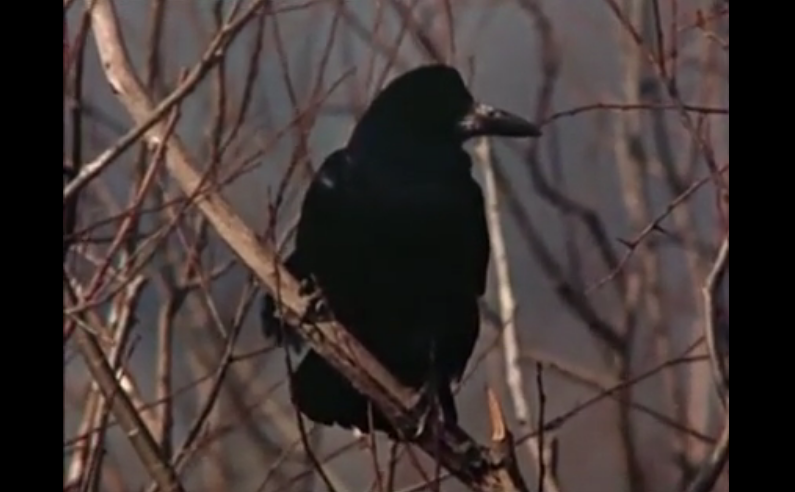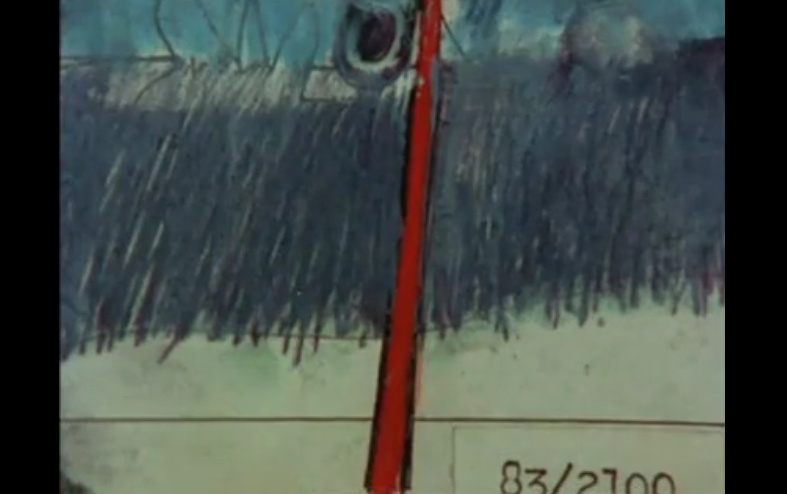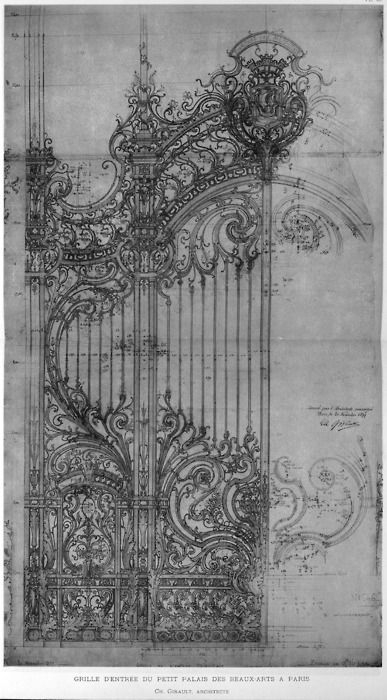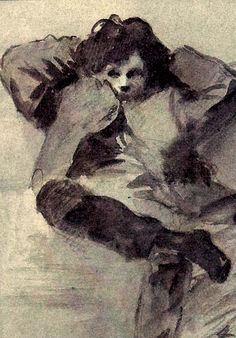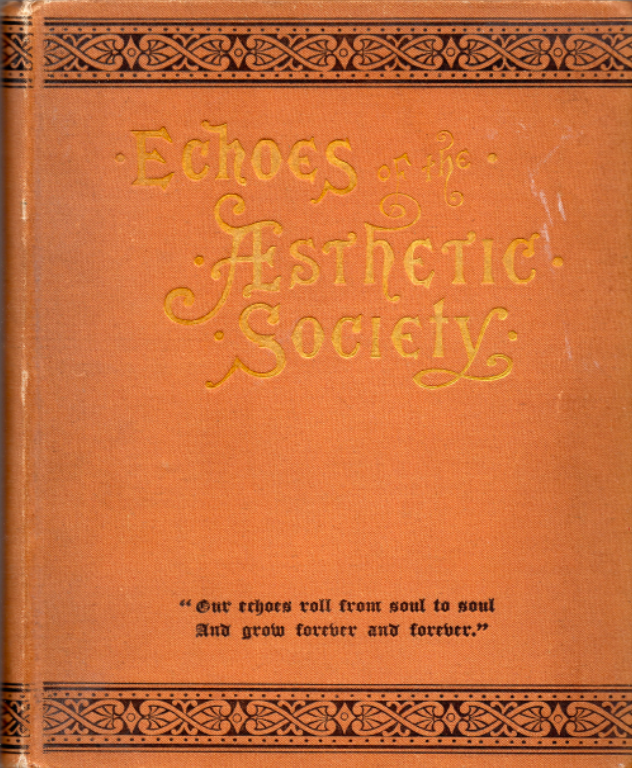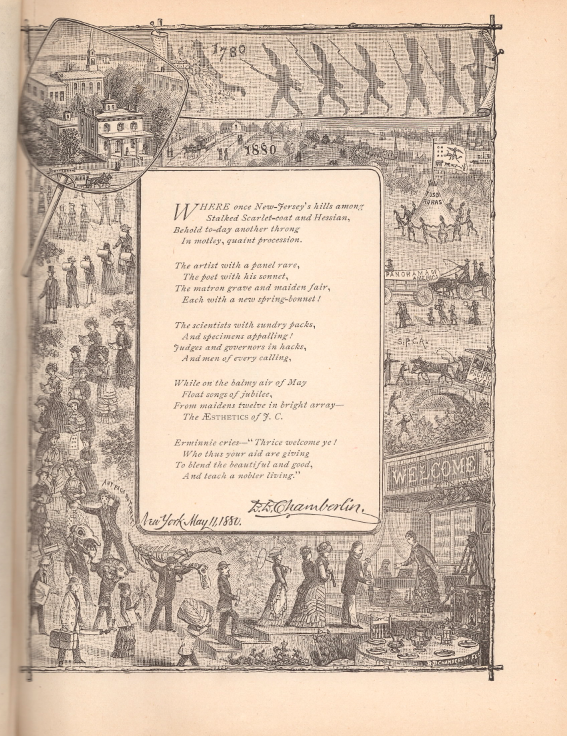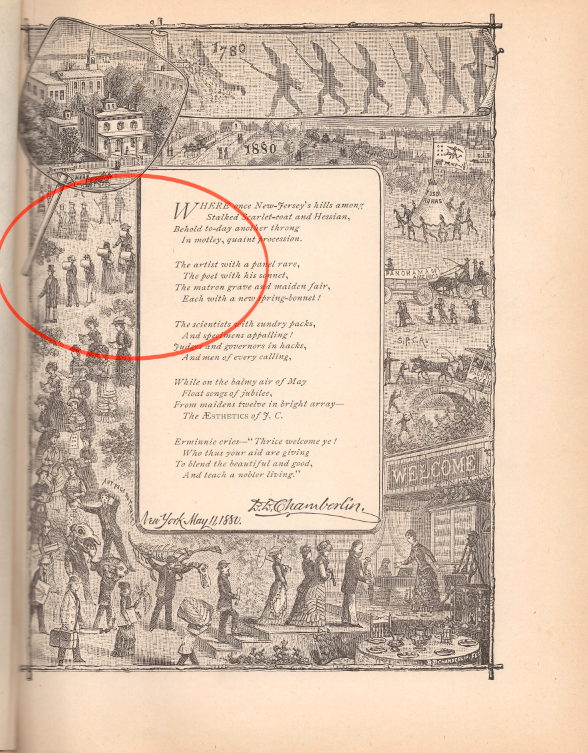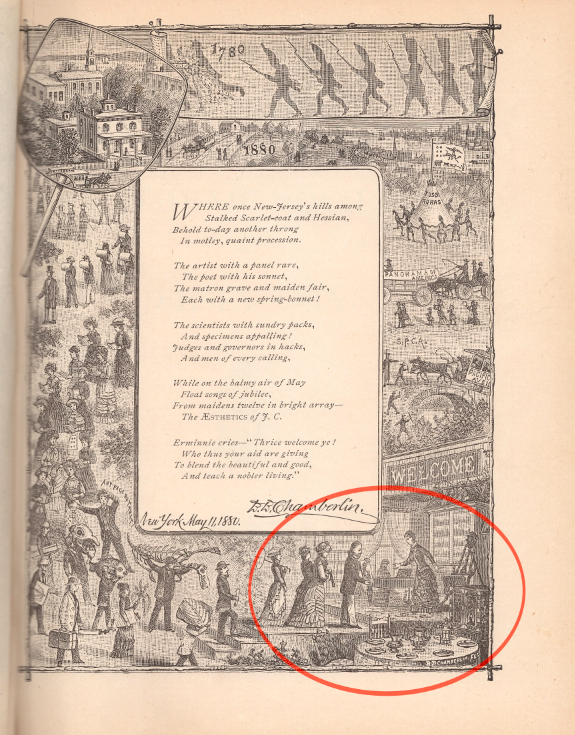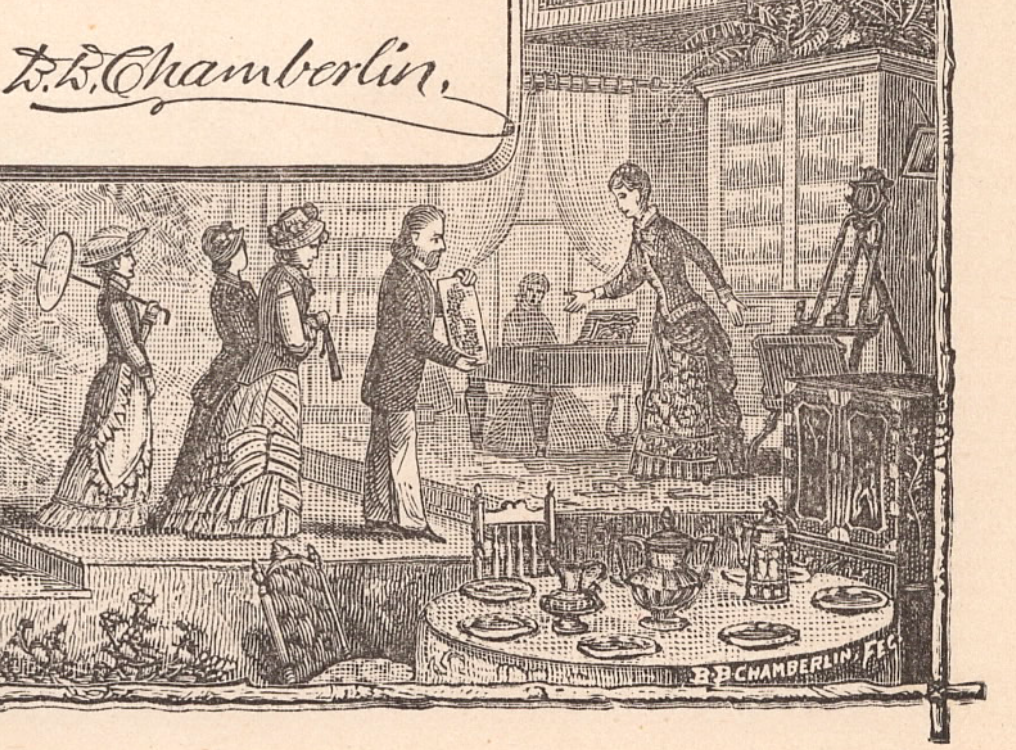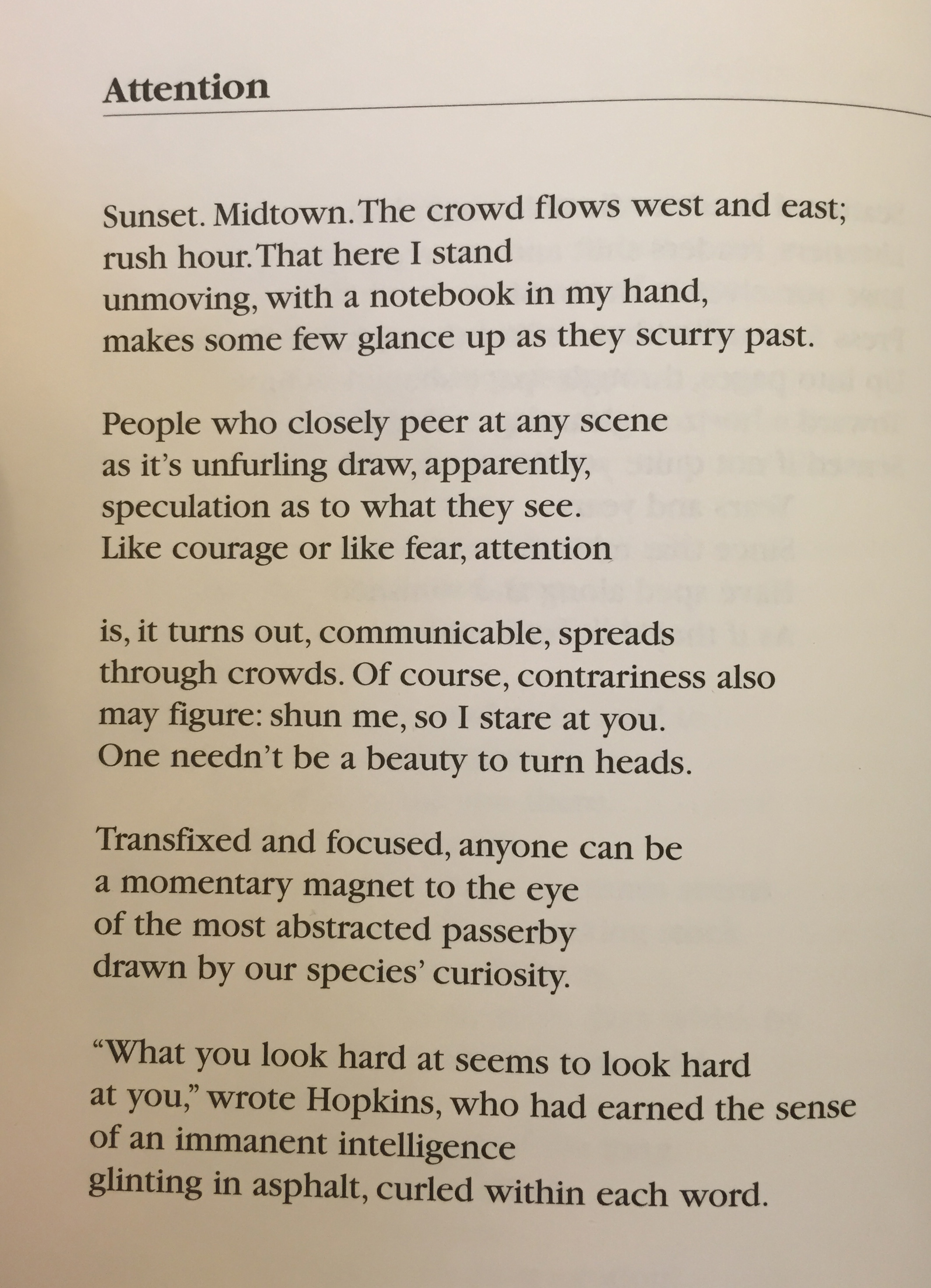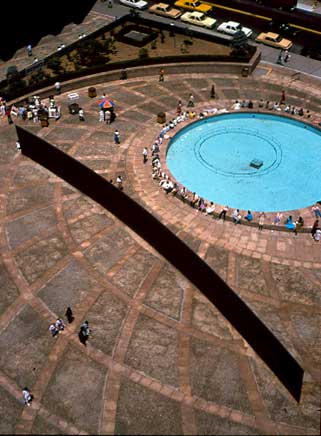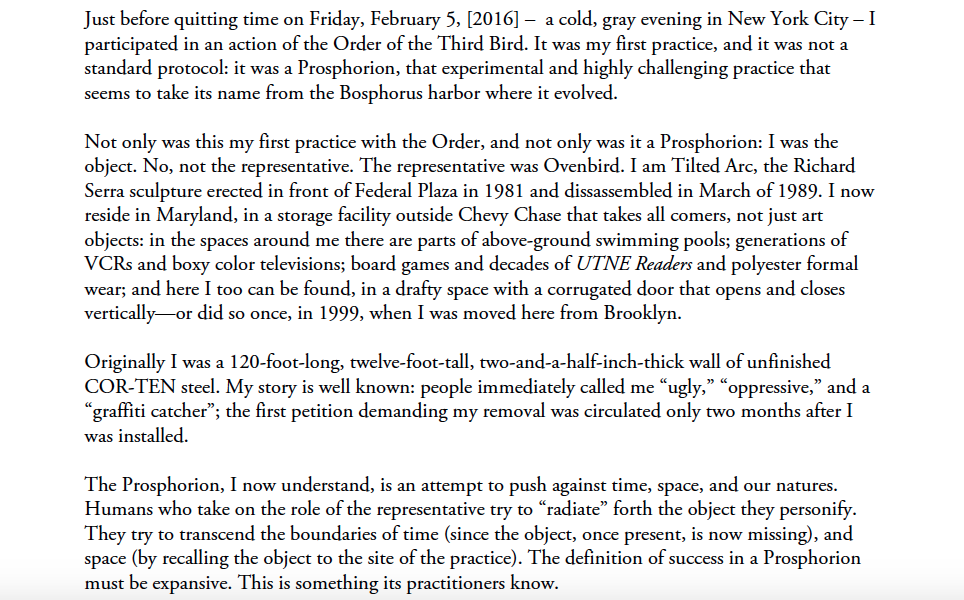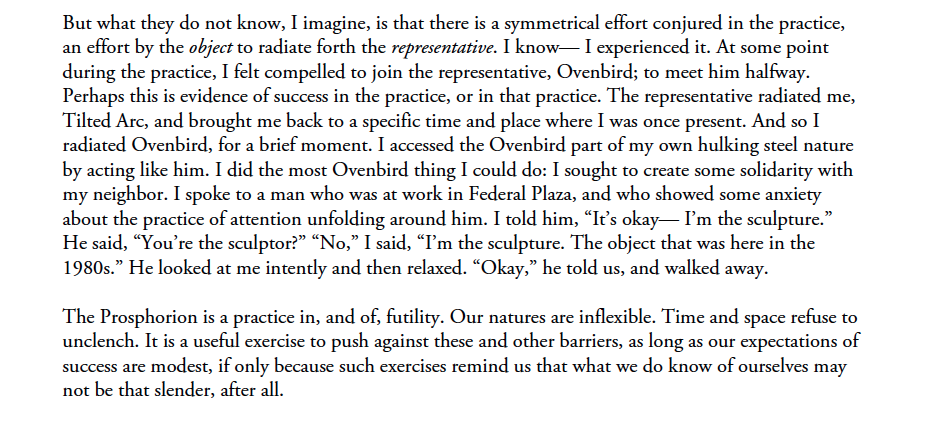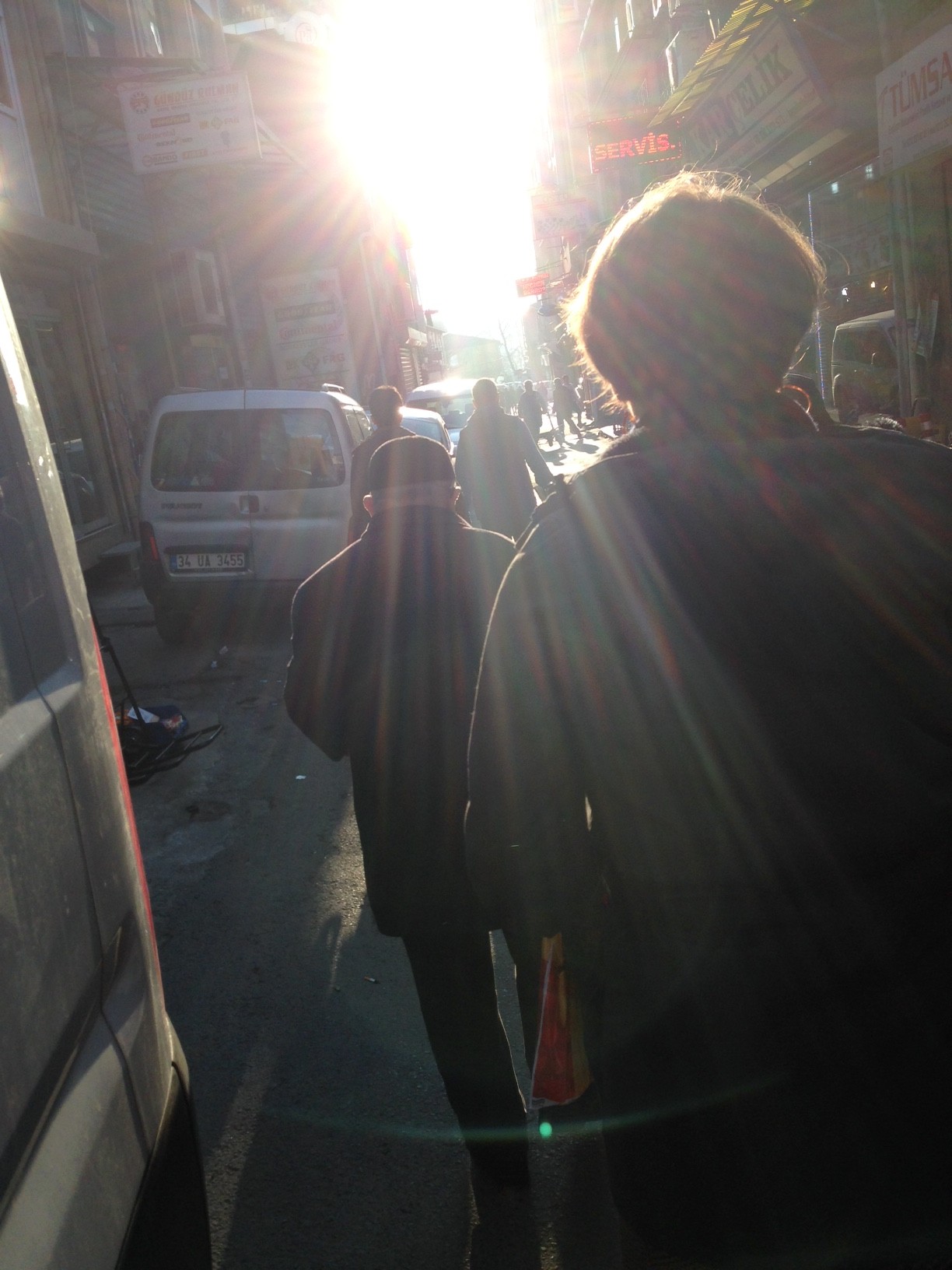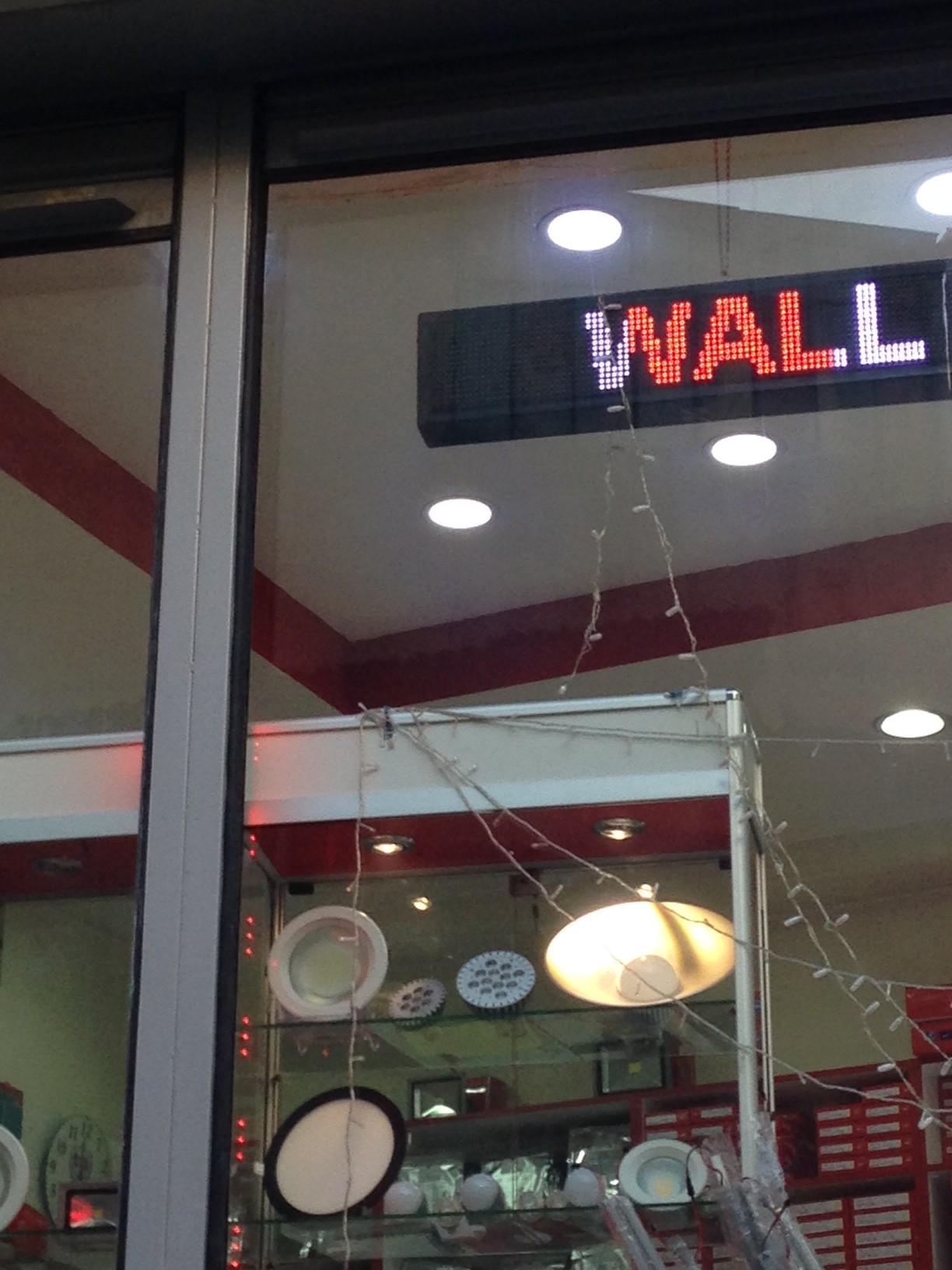The origins of the Order of the Third Bird as we know it today – a self-aware organization capable of transplanting itself internationally, like the manifesto-driven cultural movements of centuries past – are increasingly well-established in their late 18th-century European milieu. Aside from the fact that such facts, once established, become the bulwarks of an establishment and must be contested as such, nothing of this precludes, or has precluded, the convergent evolution of like-minded groups in other places, at other historical cusps, bearing other names and often wearing strange plumage.
Even so, it is startling when these convergent “species” of group-oriented aesthetes, having evolved to occupy a very particular niche in a society that comprises humans and works of art, evince a historical continuity or channel of influence where none could factually exist. The question of whether, given such evidence, we must revise our carefully constructed histories, or understandings of history, or simply chalk it all up to coincidence, can only be in the background in this short account, silent though not inert.
From Kitagawa Utamaro, The Bird Book (collection of the Fitzwilliam Museum, Cambridge)
On several occasions, groups of associates of the Order of the Third Bird traveling in the Kanto region of Japan and particularly in Tokyo have occasionally come upon what appear to be volées of Birds carrying out a Protocol of sustained attention before a work of art. When questioned – for what little good this did – they did not appear to have pledged comradeship to any other group or individual, of the Order or otherwise, or even to be aware of the latter’s existence. They wore green cotton tunics or baggy green trousers instead of the saffron-colored strips or bands so frequently seen among contemporary Birds; their “practice” appeared to consist of two or more phases, separated by a loud clap in unison, as one does in a Buddhist or Shinto temple.
What is most extraordinary, and most difficult to explain, is that they refer to themselves as members of a group called “Sanchōdōkai,” which can be roughly translated as “the order of the path of [the] three birds”; they dress in green as a kind of visual pun, since the Japanese word for “green” resembles one reading of the Chinese-derived characters for “three birds.” An individual cell of the group is called a wa, after the Chinese character meaning “wing,” which is also a counter-word used for counting birds. Requirements for membership in these groups are strict, including guidelines for personal appearance and private routine, and every new member receives a suite of “secret teachings” from a group elder, complete with ceremony and song.
From Kitagawa Utamaro, The Bird Book (collection of the Fitzwilliam Museum, Cambridge)
What has not been fully understood until very recently – in research forthcoming in the Proceedings and generously previewed with us here – are the details of what this Japanese “Order” perceives to be its genealogy. Here, some troubling matters are clarified, though others are obscured. Consider the fact, first of all, that the three most common noms de plume chosen by members (a practice similar to that of Western members of the Order) are yobukodori (literally, “calling bird”) inaōsedori (literally, “rice-bearing bird”) and momochidori (perhaps a bush warbler, though the word largely means “a multitude of birds”). These are the names of birds that appear in the Kokinshū, the great Heian-period anthology of waka poetry that set a standard for the poets of generations to come. Translators of the Kokinshū, from the earliest days to the present, have faced thorny challenges in decoding these names.
At least part of the problem for contemporary translators is the poems’ use of kakekotoba, rhetorical devices that use homophony to compress multiple layers of meaning into a single word, from which the meaning of the rest of the poem is made to suspend. For an illustration, consider these two alternative translations of a poem featuring the yobukodori, or “calling-bird”:
“Now far, now near, there / in the mountains, a songbird / warbles his tune / tentatively, will she ever / hear these love notes on the wind” (Rodd & Henkenius, 1996)
“Deep in the mountains, where I have lost my bearings / A cuckoo calls faintly.” (Shively, 1953)
Lost our bearings, indeed. For aside from the additional layers of meaning, exactly what sort of bird are we dealing with here? No one, except perhaps the original poet, has ever been sure. The identity of this bird, and of the two others, has remained a matter of debate and perplexity more or less since the poem was composed. Were they invented by the poet[s]? Were they local names for well-known species, now lost? Or perhaps, did they hide secret meanings? These three birds of the Kokinshū – yobukodori, inaōsedori, and momochidori – are so famously mysterious, in fact, that they have a collective name, Kokin no Sanchō (“the three birds of the Kokinshū”), and much ink has been spilled at their little feet. Commentators at work on other exegetical riddles, throwing up their hands, would commonly say that the mystery was “as deep as that of the three birds of the Kokinshū.”
From Kitagawa Utamaro, The Bird Book (collection of the Fitzwilliam Museum, Cambridge)
Mysteries and esoteric meanings were part and parcel of waka poetry both as practice and as institution. Scrolls containing “secret teachings” pertaining to the composition and interpretation of poetry were passed down the generations from poet-master to poet-disciple. An aspiring poet would receive, in utmost discretion and highest ceremony, a kokin denjū, or “transmission of the secret teachings of the Kokinshū,” a section of which was specifically devoted to the “transmission of the three birds,” or Sanchōden – a revelation, varying greatly from master to master and lineage to lineage according to inclination, learning, and zeal, of the true identity and complex symbolism of the birds.
In fact, what we increasingly find, among the waka disciples and waka masters, is something of a secret society of adepts founded on an increasingly exuberant weaving and reweaving of esoteric mystery around what was originally no more than the difficult attribution of certain nouns in old texts, a tissue of willful misreading and mis-erudition, of rambling associations drawn from botany, astrology, and Chinese philosophy, of spontaneous fictions taken up and closely examined as if they were the holiest writ.
As it happens, the contemporary Japanese practitioners of the “way of three birds” – to be distinguished from the “way of the third bird,” since evidently they borrow their birds from the waka “secret teachings” tradition of the three birds and not from the Ausonian parable more familiar to our readers – have willfully derived not only the terminology and the ritual solemnity of this tradition, but the spirit of hermeneutical folly that animates it.
Portrait of the poet and poetic compiler Fujiwara no Teika (1162-1241), patriarch of more than one waka-poet lineage.
But how and why, exactly, did they arrive at the point of conducting collective rituals of what is unmistakably sustained attention to works of art, from national treasures to foreign imports to casual civic works?
Our researchers are presently in possession of a scroll that most recently belonged to a member of one of the great waka families, not previously catalogued, and which firmly belongs to the tradition of delirious exegeses of “secret teachings” so disparaged by those, like the Edo-period scholar Motoori Norinaga, who later (in the words of former University of Tokyo professor Basil Hall Chamberlain) “brought the light of true philological criticism to bear on the texts in question.” Here, the three birds of the Kokinshū are made, remarkably, to correspond to three phases of a sketchily-described ritual action.
Before we draw any hasty conclusions and do as many of our colleagues delight in doing, finding here yet another protocol to add to our catalog, we must note that any individuals making practical use of this late Muromachi-period document must surely have pursued purposes palpably foreign (if congruent) to those of the Order. However – and here is where further work is urgently needed – it is also the case that many of the contemporary Japanese “three birds” groups use a ritual protocol which is quite like this one; similar enough that there must have been access to a copy of this rare text, or that its contents must have been otherwise transmitted to these practitioners. For certainly in this case at least, we cannot speak of coincidence.
The first “phase” of ritual in question, as practiced in the present day, is one of calling, and is its language recalls the Heian-period waka that first inaugurated the mystery of the three birds. One is to imagine oneself completely lost in the depths of the mountains, in an autumn twilight. One hears a high, lonely note from an unknown direction; one is called. In the second phase, also based on a single Kokinshū poem, and called a “winter” phase, one stands at one’s own gate (not lost, this time at home), listening for a sound or signal that comes from far away. The third phase – the precise details of which are closely guarded, for the time being, by those most closely involved – is called a phase of “multitude,” and is associated with the arrival of spring.









